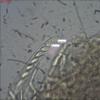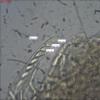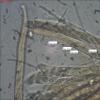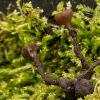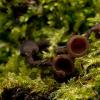
17-12-2025 18:35
 Michel Hairaud
Michel Hairaud
Bonjour à tous/Hi to everyone I am passing along

15-12-2025 15:48
 Danny Newman
Danny Newman
Melanospora cf. lagenaria on old, rotting, fallen

15-12-2025 15:54
 Johan Boonefaes
Johan Boonefaes
Unknown anamorph found on the ground in coastal sa

15-12-2025 21:11
 Hardware Tony
Hardware Tony
Small clavate hairs, negative croziers and IKI bb

15-12-2025 07:09
 Danny Newman
Danny Newman
indet. Rutstroemiaceae sp. on unk. fallen leavesMc

15-12-2025 07:05
 Danny Newman
Danny Newman
Pseudosclerococcum golindoi (det: Zotto)near Cosb

15-12-2025 11:49
 Danny Newman
Danny Newman
ITS sequences from the following two collections B

15-12-2025 12:34
 Danny Newman
Danny Newman
indet. Rhytismataceae on oak leafnear Purchase Roa

I need to see the spores in water, then it is possible (not easy) to discern if there are two or four nuclei in each spore. D. tuberosa is 4-nucleate.
Did you notice any plants around?
Zotto

On Corydalis and Ficaria occurs an apparently undescribed species which is very easily confused with D. tuberosa.

This is no Ciboria - Ciboria species do not have sclerotia but only sclerotize the substratum that may become black for instance. Ciboria betulae is a very small species with warted spores and has nothing to do with your specimen.
Regards from Lothar
P.S. the plants around. No Anemone nemorosa - o.k.
What about Ranunculus ficaria, Polygonatum, Paris?


